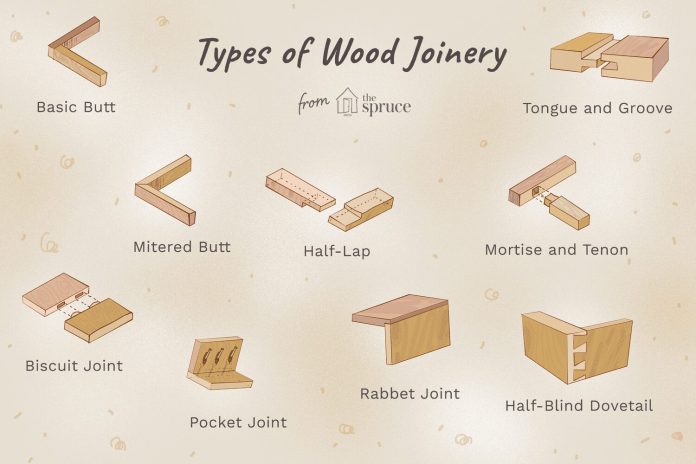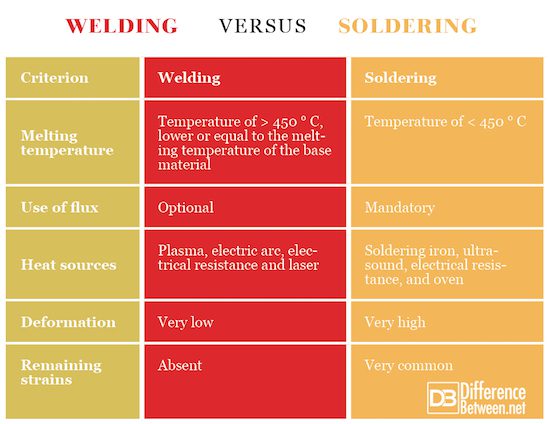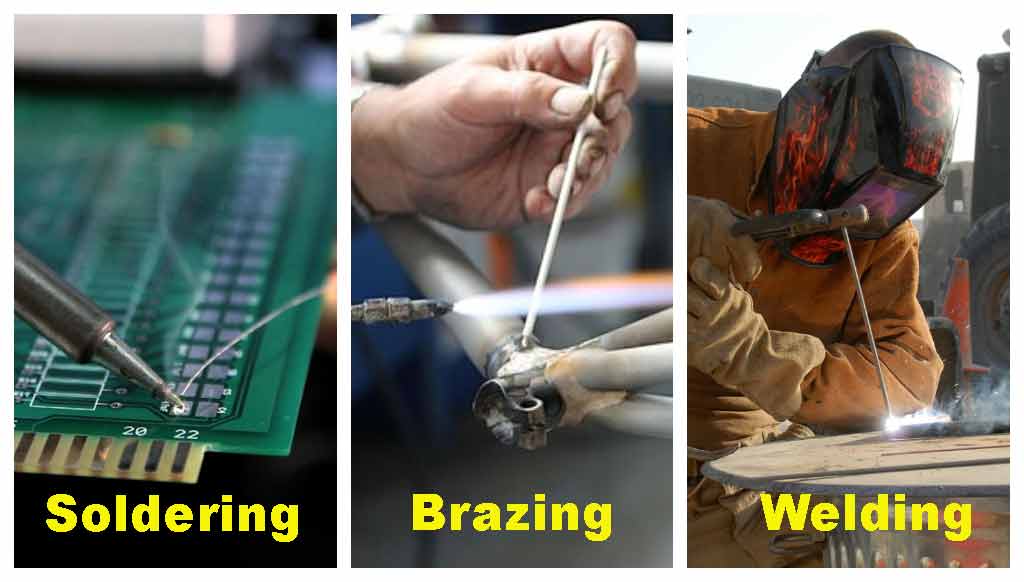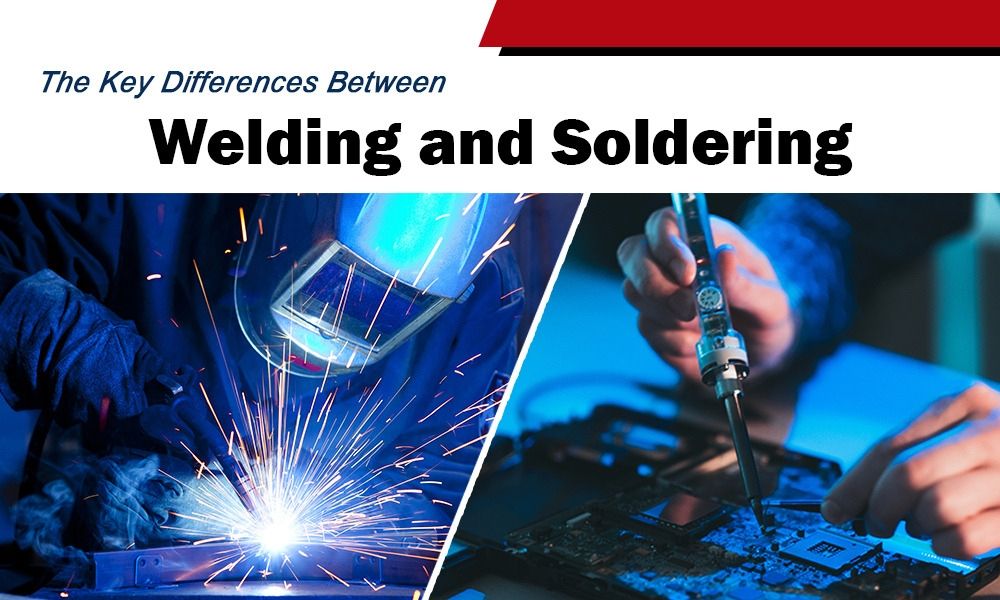Are you curious about the distinction between soldering and welding? These two techniques are often used in various industries, but what sets them apart?
In this article, we’ll explore the key differences between soldering and welding, helping you understand the unique characteristics of each method and when to use them.
So, if you’ve ever wondered about the dissimilarity between soldering and welding, read on to uncover their contrasting features and discover the best applications for these soldering and welding techniques.
Definition of Soldering and Welding
Soldering
Soldering is a joining process that involves melting a filler metal, known as solder, and applying it to the joint between two metal pieces.
The solder typically has a lower melting point than the metal being joined, allowing it to flow and create a bond when heated. Soldering is commonly used to join electrical components and small metal parts.
Welding
Welding, conversely, is a more intense joining process that involves melting the base metal and sometimes the filler metal. The melted metal cools and solidifies, forming a bond between the joined pieces. Welding is often used to join larger metal structures, such as pipes, beams, and automotive parts.
Process of Soldering and Welding
Soldering Process
The soldering process begins by cleaning the surfaces of the metal pieces to be joined, ensuring that any contaminants are removed. Flux, a chemical compound, is applied to the surfaces to promote solder flow and improve the bond.
Next, the solder is heated using a soldering iron or torch until it melts and becomes liquid. The molten solder is then applied to the joint, which flows between the metal pieces, creating a solid bond as it cools and solidifies.
Welding Process
Welding involves a more complex and intense process. Like soldering, the surfaces of the metal pieces must be cleaned to remove any impurities. However, in welding, the surfaces must be prepared by beveling or grooving to ensure proper weld penetration.
Once the surfaces are ready, an electric arc or high-intensity flame is used to heat the metal to its melting point. Sometimes, a filler metal is added to create a stronger joint. As the metal cools, it solidifies, forming a fusion between the joined pieces.
Joining Method
Soldering as a Joining Method
Soldering is primarily used for joining electrical components, circuit boards, and delicate metal parts. Its low-temperature requirement makes it suitable for joining metals with lower melting points, such as copper, brass, and tin. Soldered joints are often less intense than welded joints, but they can be more flexible and easier to disassemble.
Welding as a Joining Method
Conversely, welding is commonly used in heavy-duty applications that require solid and permanent joints. It is ideal for joining metals with higher melting points, such as steel and aluminum. Welded joints are typically more robust and durable than soldered joints but may be less flexible.
Application Areas
Soldering Applications
Soldering has wide applications in various industries. Electronics assemble circuit boards, connect wires, and repair electronic devices. It is also employed in plumbing for joining copper pipes, as well as in jewelry making, musical instrument repair, and other intricate metalwork.
Welding Applications
Welding is used in various industries, including construction, manufacturing, automotive, aerospace, and shipbuilding. It is commonly used to fabricate structures, such as buildings, bridges, and pipelines. Welding is also essential in producing vehicles, machinery, and tools and repairing metal components.
Temperature Requirement
Soldering Temperature Requirement
Soldering typically requires lower temperatures compared to welding. The temperature needed for soldering ranges from 200 to 450 degrees Celsius (392 to 842 degrees Fahrenheit), depending on the type of solder and the materials being joined. The lower temperatures make it more suitable for delicate components and heat-sensitive materials.
Welding Temperature Requirement
Welding, on the other hand, involves much higher temperatures. The temperature required for welding varies depending on the type of metal being joined and the welding process used. It can range from around 1,000 to 3,500 degrees Celsius (1,832 to 6,332 degrees Fahrenheit). The high temperatures allow for the melting and fusion of the base metal, resulting in a strong bond.
Strength and Durability
Strength of Soldered Joints
Soldered joints generally have lower strength compared to welded joints. The strength of a soldered joint depends on the type of solder used, the cleanliness of the metal surfaces, and the quality of the soldering technique. Soldered joints are typically stronger in shear strength rather than tensile strength, making them more suitable for applications where movement and flexibility are required.
Strength of Welded Joints
Welded joints are known for their high strength. The strength of a welded joint depends on factors such as the welding process, the type of metal being joined, and the quality of the weld. Welded joints can often achieve strength equivalent to or greater than the base metal. They are suitable for applications where structural integrity and load-bearing capacity are crucial.
Durability of Soldered Joints
Soldered joints are generally less durable compared to welded joints. They may be more prone to fatigue and failure under prolonged stress or harsh conditions.
Soldered joints can also be more susceptible to corrosion, especially if the solder is not corrosion-resistant. However, soldering can still provide satisfactory results for non-structural applications or situations where durability is not a primary concern.
Durability of Welded Joints
Welded joints are highly durable and can withstand harsh conditions and heavy loads. When adequately executed, welded joints can resist fatigue, corrosion, and other forms of deterioration.
The durability of a welded joint largely depends on the quality of the weld, including factors such as penetration, fusion, and the absence of defects. Proper post-weld treatments, such as stress relieving and protective coatings, also contribute to the long-lasting durability of welded joints.
Types of Soldering and Welding
Types of Soldering
There are various types of soldering techniques, including:
- Soft Soldering: This type of soldering uses solder with a lower melting point, such as tin-lead or tin-silver alloys. It is commonly used in electronics, plumbing, and jewelry making.
- Hard Soldering: Also known as silver soldering, this technique uses higher melting point solders, such as silver-based alloys. It provides stronger joints and is often used in applications requiring higher strength.
- Brazing: Similar to soldering, brazing involves using a filler metal to join two pieces of metal. However, brazing typically requires higher temperatures, and the filler metal has a higher melting point.
Types of Welding
Different welding processes are available for various applications, including:
- Arc Welding: This includes processes such as shielded metal arc welding (SMAW), gas metal arc welding (GMAW), and gas tungsten arc welding (GTAW). Arc welding uses an electric arc to melt and fuse the base metal, often with the addition of a filler metal.
- Resistance Welding: This type of welding uses the heat generated by resistance to electric current flow to join metals together. Examples of resistance welding techniques include spot welding and seam welding.
- Gas Welding: Gas welding, or oxy-fuel welding, combines fuel gas and oxygen to produce a flame for melting and joining the metal. It is versatile and can be used with various metals and alloys.
Special Considerations
Safety Considerations
Both soldering and welding involve high temperatures and the potential for toxic fumes and hazardous materials.
When soldering or welding, it is crucial to ensure proper ventilation in the workspace and wear appropriate personal protective equipment, such as gloves, goggles, and aprons. It is also essential to follow safety guidelines and procedures to prevent accidents, burns, and inhalation of harmful substances.
Skill Requirements
Soldering and welding both require specific skills and knowledge to achieve successful results. Precision and attention to detail are essential in soldering to ensure proper bonding and avoid damage to components.
On the other hand, welding demands more skill and experience, as it involves more complex techniques and requires an understanding of different welding processes and materials.
Cost
Soldering Cost
Soldering is generally considered a cost-effective joining method. The equipment and materials required for soldering, such as soldering irons, flux, and solder, are relatively affordable and readily available. Soldering can often be done with essential tools and does not require extensive setup or specialized machinery.
Welding Cost
Welding can be a more expensive joining method compared to soldering. The equipment used in welding, such as welding machines, protective gear, and gases, can be costly.
Additionally, welding may require specialized training and certifications, which can add to the overall cost. However, in many industrial and construction applications, the strength and durability of welded joints justify the higher upfront cost.
Equipment Cost
The equipment cost for soldering and welding can vary depending on the requirements and applications. Soldering usually requires a soldering iron or torch, flux, solder, and cleaning materials, which can be purchased relatively cheaply.
On the other hand, welding machines, gas cylinders, electrodes, welding wire, and other accessories may require welding machines, which can result in higher equipment expenses.
Summary
Soldering and welding are two distinct joining methods with different applications, temperature requirements, strength, and costs. Soldering is commonly used in electronics, plumbing, and delicate metalwork, while welding is more suitable for heavy-duty applications in construction, manufacturing, and other industries.
Welded joints generally have higher strength and durability than soldered joints, but soldered joints can be more flexible and easier to disassemble. Proper safety precautions and skillful execution are crucial in soldering and welding for reliable and lasting results.









































